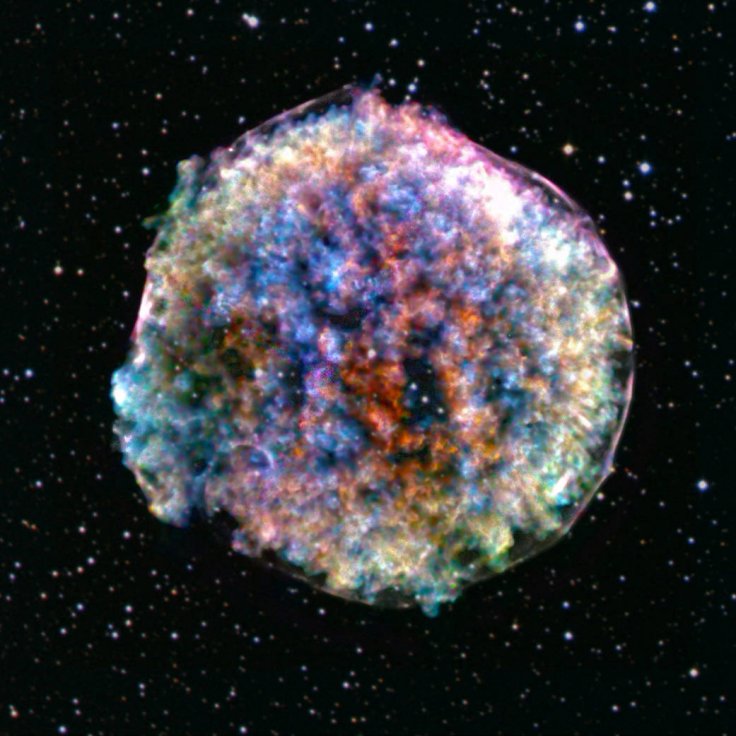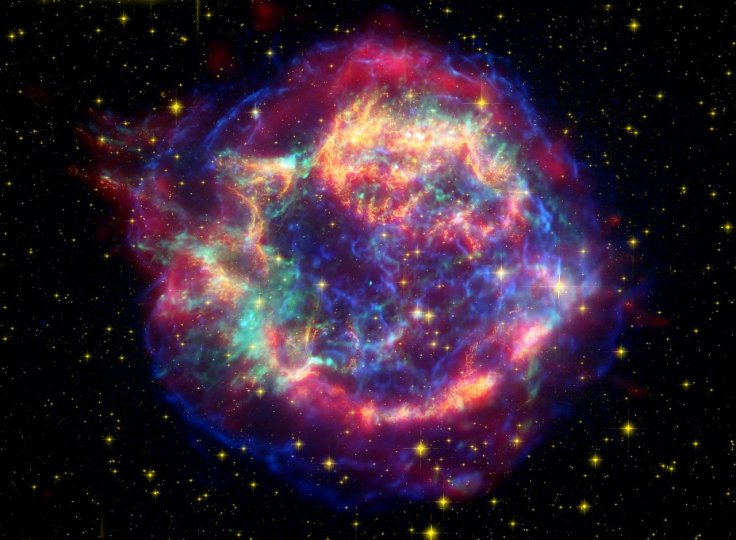
Using the latest image taken by NASA's Chandra X-ray Telescope, a team of researchers was able to understand what caused the clumpy appearance of the supernova remnant known as Tycho Supernova. According to the researchers' findings, its appearance may have been caused by multiple explosions triggered by the supernova.
The Tycho Supernova, also known as SN 1572, is located in the constellation Cassiopeia. It was first observed in 1572 by a Danish astronomer known as Tycho Brahe who noticed a new bright object within the constellation. Other astronomers who studied the cosmic object categorized it as a Type Ia supernova, which refers to the explosion caused by a white dwarf star.
NASA Chandra X-ray Observatory, which has been operating for about 20 years, has been regularly observing the remnant of the violent supernova. Unlike other known supernovas, SN 1572 has a very unique appearance. In the latest image captured by Chandra, several multi-coloured clumps can be seen within the supernova.
"Chandra reveals an intriguing pattern of bright clumps and fainter areas in Tycho," NASA stated in a statement. "What caused this thicket of knots in the aftermath of this explosion? Did the explosion itself cause this clumpiness, or was it something that happened afterward?"

Using the data collected by Chandra, the researchers were able to closely study the brightly colored clumps within the supernova. The researchers then compared these clumps to 3D simulations of other type Ia supernova.
"In this article, we focus on discriminating between clumping distributions that arise from the explosion and those from the remnant's evolution using existing 3D hydrodynamical simulations," the researchers wrote in the abstract of their study. "We utilize the genus statistic for this discrimination, applying it to the simulations and to Chandra X-ray observations of the well-known SN Ia remnant of SN 1572."
Based on their observations, the researchers narrowed down a possible explanation for the appearance of the clumps. According to the researchers, these clumps may have been formed by the multiple ignition points triggered by the main explosion of the supernova.
This can be compared to an initial explosion causing a chain reaction among multiple sticks of dynamite that are scattered in a specific area. The findings of the researchers were presented in a new study published in the Astrophysical Journal.









